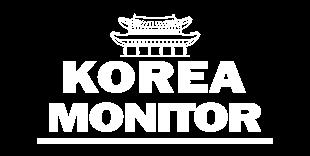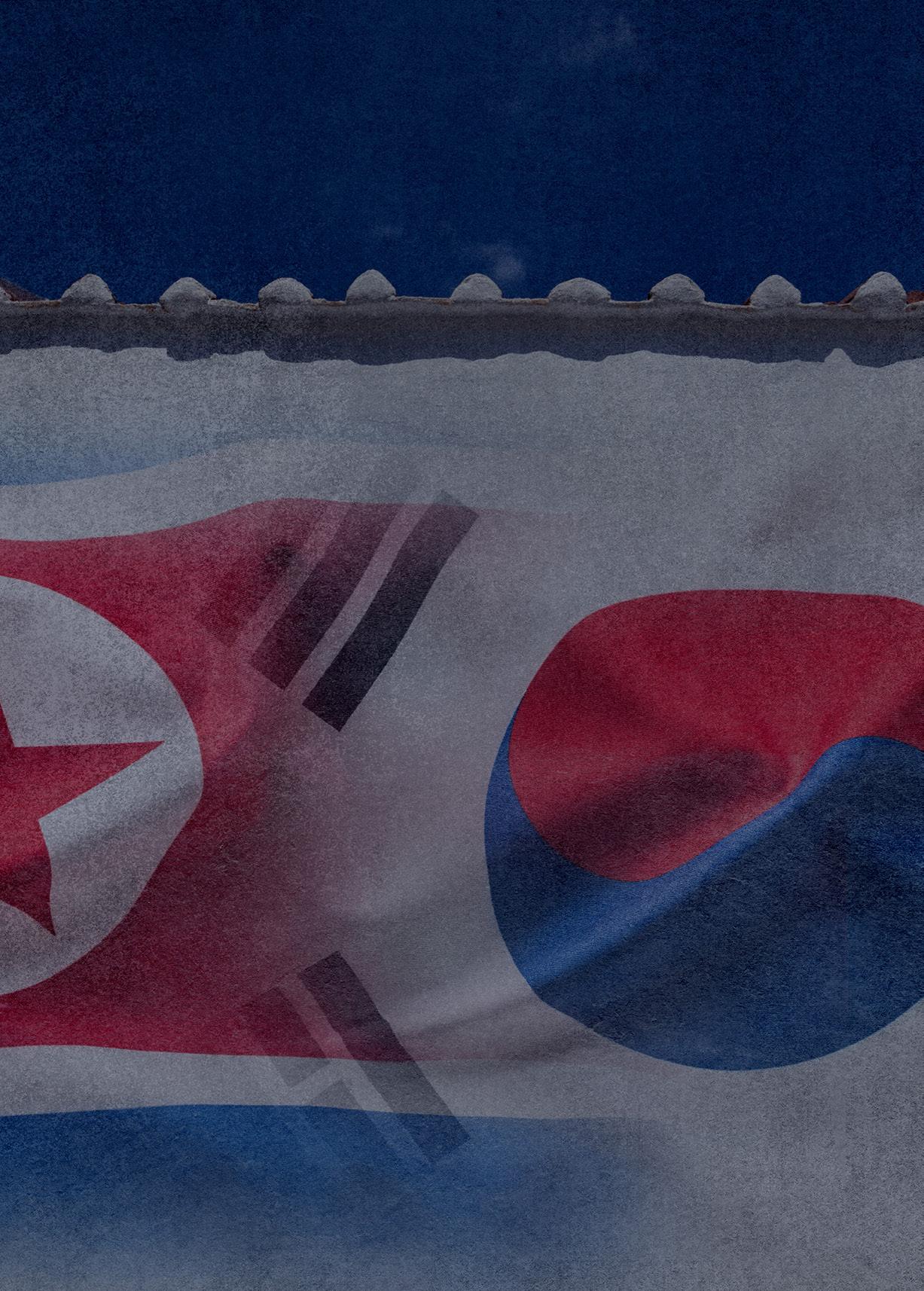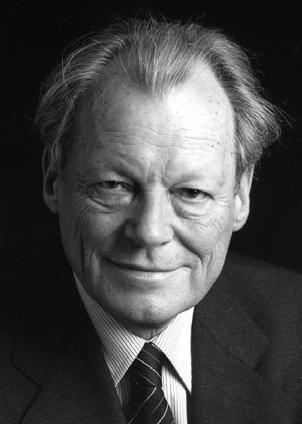

2025/07/22
The lessons of the Ostpolitik and successive Sunshine Policies in modern inter-Korean relationships



2025/07/22
The lessons of the Ostpolitik and successive Sunshine Policies in modern inter-Korean relationships
Han-Ul Chang Head of the South Asia, Pacific and Oceania Department at Institut d’études de géopolitique appliqué (IEGA)
As the aftermath of World War II’s end and the Cold War’s tensions, Germany and the Korean Peninsula have been suddenly divided. Then, West Germany and South Korea developed the incentive of a cooperation policy with their respective half: the Ostpolitik in Germany and the Sunshine Policy in Korea. The purpose of these policies was, therefore, intended to improve
dialogue and liaison. At the end Germany succeeded in achieving reunification at the end of the Cold War whereas South Korea remained separated. Although the Sunshine policy has made some progress in the inter-Korean relationships, South Korea continues to be challenged in its search for a lost peace and reunification.
It has been more than 75 years since the Korean Peninsula was separated. For the last decades, the wish for normalizing the inter-Korean relations and the possibility of reunification have crossed the mind of some South Korean leaders. In the early 2000s, upon the incentive of normalizing their relations with North Korea, South Korea took inspiration from the German Ostpolitik in the development of the Sunshine Policy 1. Hence, a legitimate comparison has been developed between the two cooperative policies. For a long time, German reunification was taken as an
example of diplomacy in order to deal with North Korea, especially from the Democrat Presidents who have installed the Sunshine policy as a motto. Nowadays, the relevance of the comparison is however debated as the general geopolitical context has changed.
On June 3rd, 2025, South Korean people elected a new President, Lee Jae Myung from the Democratic Party of Korea. He will follow the heritage of his democrat predecessors by applying the principles of the Sunshine Policy in his inter-Kore-
1. K.Y. Son, South Korean Engagement Policies and North Korea, (2006), Routledge

The lessons of the Ostpolitik and successive Sunshine Policies in modern inter-Korean relationships
an relations with North Korean Leader Kim Jong Un. The Lee Administration is willing to reopen dialogue with Pyongyang in order to find a sustainable path for a long term peace, and a future reunification. The President emphasized his stance during his inaugural speech by recalling the importance of “winning without fighting”.
Thus, the present article will be an attempt of a comparative analysis between the Ostpolitik and the Sunshine policy, and what kind of lessons the newly Lee Administration could learn from them in its quest for peace on the peninsula.
The Ostpolitik as well as the Sunshine policy were raised from the minds of two leaders: the Chancellor of the Federal Republic of Germany (FDG), Willy Brandt, and the President of the Republic of South Korea, Kim Dae Jung, who

both believed in a cooperation with their other half. Their elections, respectively in 1969 and 1998, represented a significant political shift in West Germany as well as in South Korea.

Chancellor Willy Brandt and President Kim Dae Jung, the men behind the Ostpolitik and Sunshine Policy
WILLY BRANDT PICTURE: ENGELBERT REINEKE, PORTRÄT WILLY BRANDT, BUNDESKANZLER 1969–1974, IM JAHR 1980., GERMAN FEDERAL ARCHIVES, WIKIPEDIA https://commons.wikimedia.org/wiki/File:Bundesarchiv_B_145_Bild-F057884-0009,_Willy_Brandt.jpg
KIM DAE JUNG PICTURE: OFFICIAL PORTRAIT OF KIM DAE-JUNG, THE 15TH PRESIDENT OF THE REPUBLIC OF KOREA, FEBRUARY 25, 1988, WIKIPEDIA https://commons.wikimedia.org/wiki/File:Kim_Dae-jung_presidential_portrait.jpg

The lessons of the Ostpolitik and successive Sunshine Policies in modern inter-Korean relationships
It was the first time since the establishment of the FRG in 1949 that the Christian Democrats were not part of the government. The new Socio-Liberal government led by Chancellor Brandt drove a policy of normalizing the relations towards the East 2 , which was a radical change from previous policies that emphasized confrontation. The trust of his stance was built by the ratification of several treaties:
• The Moscow Treaty (1970) which recognized existing borders in Europe, opened diplomatic relations and confirmed the peacetime territorial status quo. The treaty was the foundation of the Ostpolitik
• The Warsaw Treaty (1970) allowed Polish Nationals of German origins to settle in FDG
• The Basic Treaty (1972) where the two Germanys recognized one another and established normal political and trade relations
The diplomatic action made by Chancellor Brandt permitted both West and East Germany being admitted to the United Nations in 1973.
As for South Korea, since the Korean Independence in 1948, President Kim became the first Democrat President after fifty years over authoritarian regimes. In his first days at office, he launched the Sunshine Policy, his peace initiative towards North Korea, by:
• easing military tensions
• seeking cooperation and exchanges
• building trust
These efforts eventually made a breakthrough in inter-Korean relations with the historic meeting between President Kim Dae Jung and Supreme Leader Kim Jong Il (Kim Jong Un’s late father) during the first Korean Summit in Pyongyang, in June 2000.
Through their bold initiatives, the South Korean and West German leaders wanted to pave the path for a peaceful coexistence between two faces of the same coin; they knew it was going to be a long road for peace and reunification.
Ostpolitik and Sunshine Policy were initiated during intense international challenges and domestic issues 3: Germany was part of the Cold War while South Korea was dealing with the IMF crisis. Moreover, both policies encountered a negative public opinions regarding an unifica-
tion 4; even though the “unification” was not seen as the ultimate goal, but rather focused on the normalization of the relations and peaceful coexistence. In order to achieve these aims, they emphasized their politics on: talks with the organisation of summits where the leaders of each
2. R. Raus, L’Ostpolitik de Willy Brandt et la construction européenne, (2005), Université de Paris 1 Panthéon Sorbonne
3. K. Niclauss, Kontroverse Deutschandpolitik, (1997), Alfred Metzner, p. 82
4. S.D. Jeong, Comparison of Reconciliation Policy Toward G.D.R of Brandt-Schmidt Administration and the Sunshine Policy of Kim Dae-Jung Administration, (1997), Sejong Institute

The lessons of the Ostpolitik and successive Sunshine Policies in modern inter-Korean relationships

BERLIN WALL PICTURE: F. LEE CORAN, A CROWD OF WEST GERMAN CITIZENS GATHERS AT THE NEWLY CREATED OPENING IN THE BERLIN WALL AT POTSDAMER PLATZ, NOVEMBER 14, 1989, NATIONAL ARCHIVES CATALOG https://catalog.archives.gov/id/6460115
half met, economic exchange and the reunion of dispersed family 5. Hence, the two initiatives as an attempt of a peaceful management of the division allowed the two leaders to be respectively rewarded with a Peace Nobel Prize: in 1972 for Willy Brandt and 2001 for Kim Dae Jung.
Although the two policies share common principles, they also present major differences. First and foremost, the Ostpolitik and the Sunshine Policy each began at a different period of time. On the one hand, the Ostpolitik started in 1969, only eight years after the edifice of the Berlin Wall (1961) 6. On the other hand, when the Sunshine Policy was applied in 1998, the Berlin Wall had already fallen and the Cold War was over. In other
words, it took fifty years following the division of the Peninsula for Korea to think of a cooperative policy. Fifty years filled with conflicts, tensions, and provocations. Hence, throughout these years, the socio-economic situation between the two Koreas had changed 7; South Korea became a strong economy and a developed country while North Korea’s economy was falling down and was developing the nuclear weapon as an all in bet, which made North Korea even more isolated upon the diplomatic plan.
Another main difference between West Germany and South Korea is the diplomatic consistency. The successor of Chancellor Brandt, Helmut Schmidt, kept the same approach of dealing with
5. K.Y. Lee, A Comparison between Neue Ostpolitik and the Sunshine Policy: Implications for the Stability on the Korean Peninsula, (2011), New Asia, Vol. 18. No. 1
6. H. Bögeholz, Die Deutschen nach dem Krieg, Eine Chronik, (1995), Rowohlt
7. C.I Moon, The Sunshine Policy in Defense of Engagement as a path to peace in Korea” (2012), Yonsei University Press

The lessons of the Ostpolitik and successive Sunshine Policies in modern inter-Korean relationships
cooperative inter-German relations that led to the reunification. In Korea, there is a diplomatic inconsistency amongst the South Korean Presidents, which is explained by the divided stance between the People Power Party (conservative) and the Democratic Party (democrat/liberal) regarding North Korea. The Conservators present a more provocative approach, whereas the Democrats share the values of the Sunshine Policy. Eventually, the Korean Peninsula does not seem to receive the same international support regarding peace and reunification as Germany at its time. Nowadays, the main Korean neighbors’ outlook, namely China, Japan, Russia and the United States, would rather be a status quo than a reuni-
fication 8. Moreover, North Korea is now equipped with a nuclear arsenal, which was not the case for East Germany. This issue is an additional input to take into consideration in the inter-Korean relationships.
Ultimately, due to the ongoing domestic and geopolitical dynamics, the actual picture of the Korean Peninsula makes the comparison with divided Germany not as relevant as in the past. Nevertheless, German reunification’s aftermath and issues might become a source of inspiration in the case where Korea would achieve its reunification.

https://www.flickr.com/photos/koreanet/25313465837/in/album-72157680049943155/

The

PRESIDENT LEE JAE MYUNG, AN HEIR OF THE SUNSHINE POLICY, PLEDGES TO IMPROVE THE RELATIONS WITH NORTH KOREA BY DIALOGUE
LEE JAE MYUNG PICTURE: JOINT PRESS PHOTO (REPUBLIC OF KOREA GOVERNMENT), THE INAUGURATION CEREMONY OF THE 21TH PRESIDENT OF REPUBLIC OF KOREA LEE JAE-MYUNG, THE 21TH PRESIDENT OF REPUBLIC OF KOREA, WIKIPEDIA https://commons.wikimedia.org/wiki/File:The_Inauguration_Ceremony_of_the_21th_President_ of_Republic_of_Korea_(54566787254).jpg
Before the election of President Lee Jae Myung, there were three Democrat Presidents who used the Sunshine Policy : Kim Dae Jung, Roh Moo Hyun and Moon Jae In. Three previous experiences from which the Lee Administration could learn. Former President Kim Dae Jung aimed to seek a loosening containment of North Korea, embracing them and perhaps denuclearizing
them. He, then, made 3 principles 9:
• no armed provocation by the North will be tolerated
• the South will not attempt to absorb the North in any way
• the South will actively seek cooperation
9. K.Y. Son, South Korean Engagement Policies and North Korea, (2006), Routledge

The lessons of the Ostpolitik and successive Sunshine Policies in modern inter-Korean relationships
These principles permitted a cultural and economic development in North Korea, whose apex was the building of the Kaesong complex (a city chosen for its symbolism as it was the former capital of the Goryo realm). The complex brought economic development and the sharing of industrial knowledge. But, the complex has been shut down under Park Guen Hye’s presidency (a conservative president). President Lee Jae Myung would like to reopen the complex during his mandate.
Prior to President Roh Moo Hyun taking office, the U.S. President George W. Bush branded North Korea as terrorists. This declaration weakened the U.S.-Korea alliance and the inter-Korean relations. Therefore, President Roh was not able to apply the Sunshine Policy for almost the five years of his mandates. It illustrates the factor of the United States’ stance towards North Korea in the inter-Korean relations. The Roh Administration nevertheless managed to hold a second Korean Summit in 2007, before the efforts were stymied afterwards with the election of Conservative President Lee Myung-Bak.
There were some symbolic moments between two Koreas under the Moon Administration; for instance, North and South Korean athletes walking beneath the unified Korea flag during the ceremonies of Pyeongchang Winter Olympics in 2018, or the meeting between President Moon Jae In and Leader Kim Jong-Un in Pyongyang. Together, they signed the Panmunjom Declaration on April 28, 2018, on which they had agreed to cooperate of an official ending of the Korean War and to start a new era of cooperation and peace by shared commitment, in particular on the denuclearization of the Peninsula 10. However, the relationship got colder, and the Declaration never went into concrete action.
In this specific period driven by uncertainty, North Koreans and South Koreans must not forget that they are both Korean people, which is a crucial sentiment in the development of further liaison. This shared identity is essential to be remembered in a time when South Koreans, especially the younger generations, are losing their interest in cooperation and reunification issues.
Inspired by the Ostpolitik and its achievements, the principles of the Sunshine Policy is still the main compass of Democrat Korean Presidents when it comes to coping with North Korea. Yet, the previous applications of the policy have demonstrated that the relationships between the two Koreas are unpredictable and fragile as they are depending on several factors like the personality of the President at the office, the geopolitical environment and the craving of both countries. The path for peace and reunification demands resilience and diplomatic balance.
Upon the current geopolitical scene, the Ostpolitik and German reunification are becoming less relevant in the modern inter-Korean relationships. Perhaps, it is time for South Korea to find a new source of inspiration in order to enhance the incentives of the Sunshine Policy; why not from European Construction?
10. Dylan Stent, Moon’s plan for inter-Korean relations is actually 40 years, The Diplomat, 2020-10-23

The lessons of the Ostpolitik and successive Sunshine Policies in modern inter-Korean relationships
• K.Y. Son, South Korean Engagement Policies and North Korea, (2006), Routledge
• R. Raus, L’Ostpolitik de Willy Brandt et la construction européenne, (2005), Université de Paris 1 Panthéon Sorbonne
• K. Niclauss, Kontroverse Deutschandpolitik, (1997), Alfred Metzner, p. 82
• S.D. Jeong, Comparison of Reconciliation Policy Toward G.D.R of Brandt-Schmidt Administration and the Sunshine Policy of Kim Dae-Jung Administration, (1997), Sejong Institute
• K.Y. Lee, A Comparison between Neue Ostpolitik and the Sunshine Policy: Implications for the Stability on the Korean Peninsula, (2011), New Asia, Vol. 18. No. 1
• Willy Brandt picture: Engelbert Reineke, Porträt Willy Brandt, Bundeskanzler 1969–1974, im Jahr 1980., German Federal Archives, Wikipedia
https://commons.wikimedia.org/wiki/ File:Bundesarchiv_B_145_Bild-F0578840009,_Willy_Brandt.jpg
• Kim Dae Jung picture: Official Portrait of Kim Dae-jung, the 15th President of the Republic of Korea, February 25, 1988, Wikipedia
https://commons.wikimedia.org/wiki/ File:Kim_Dae-jung_presidential_portrait. jpg
• Berlin Wall picture: F. Lee Coran, A crowd of West German citizens gathers at the newly created opening in the Berlin Wall at Potsdamer Platz, November 14, 1989, National Archives Catalog https://catalog.archives.gov/id/6460115
• H. Bögeholz, Die Deutschen nach dem Krieg, Eine Chronik, (1995), Rowohlt
• C.I Moon, The Sunshine Policy in Defense of Engagement as a path to peace in Korea” (2012), Yonsei University Press
• H. Kim, The Day After: ROK-U.S. Cooperation for Korean Unification, (2015), The Washington Quarterly
• Dylan Stent, Moon’s plan for inter-Korean relations is actually 40 years, The Diplomat, 2020-10-23
• Pyeongchang Olympic picture: 2018 PyeongChang Winter Olympic Games Opening Ceremony, February 9, 2018, Presidential Security Service, flickr https://www.flickr.com/photos/ koreanet/25313465837/in/album72157680049943155/
• Lee Jae Myung picture: Joint press photo (Republic of Korea Government), The Inauguration Ceremony of the 21th President of Republic of Korea Lee Jae-Myung, the 21th President of Republic of Korea, Wikipedia https://commons.wikimedia.org/wiki/ File:The_Inauguration_Ceremony_of_ the_21th_President_of_Republic_of_ Korea_(54566787254).jpg

Warsaw Institute Wilcza St. 9, 00-538 Warsaw, Poland office@warsawinstitute.org


